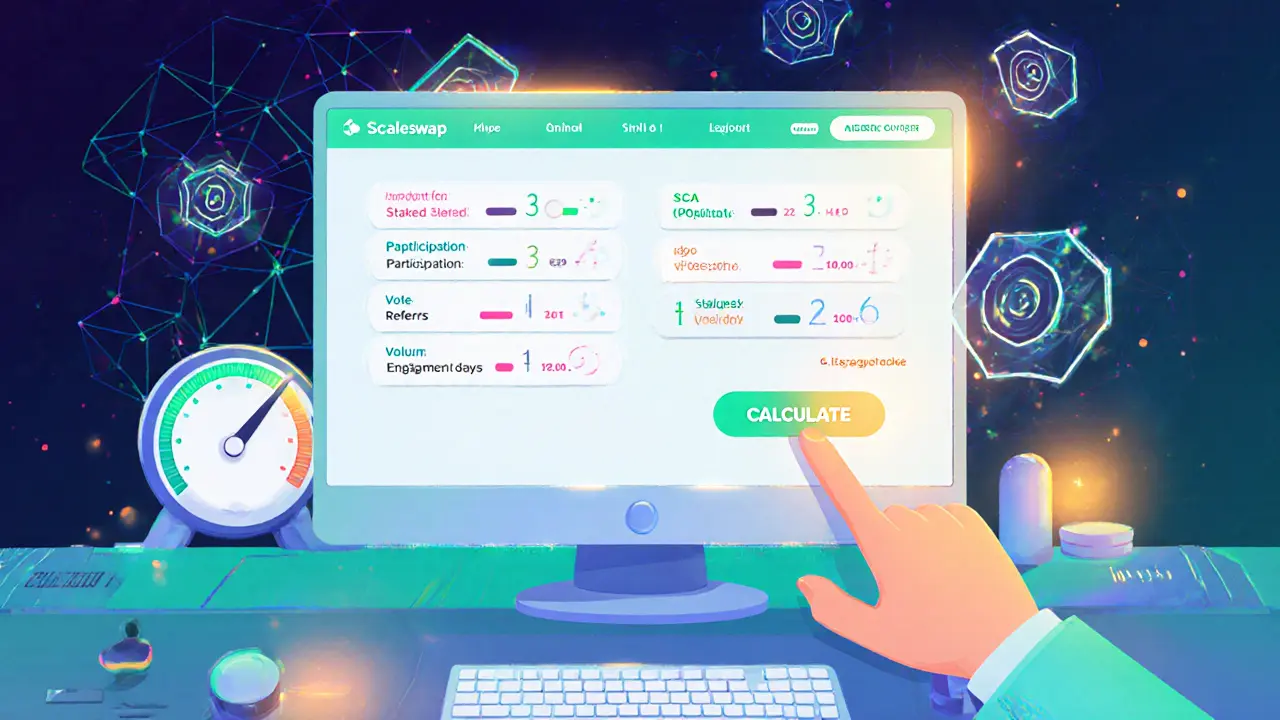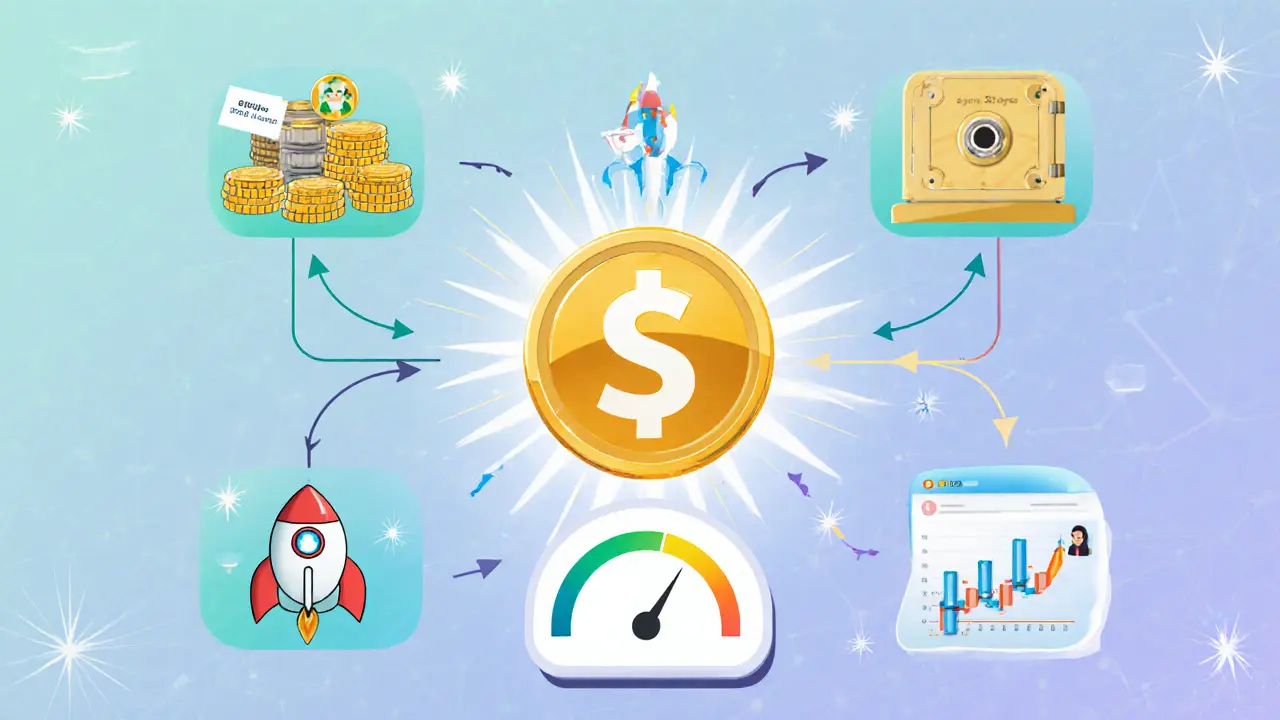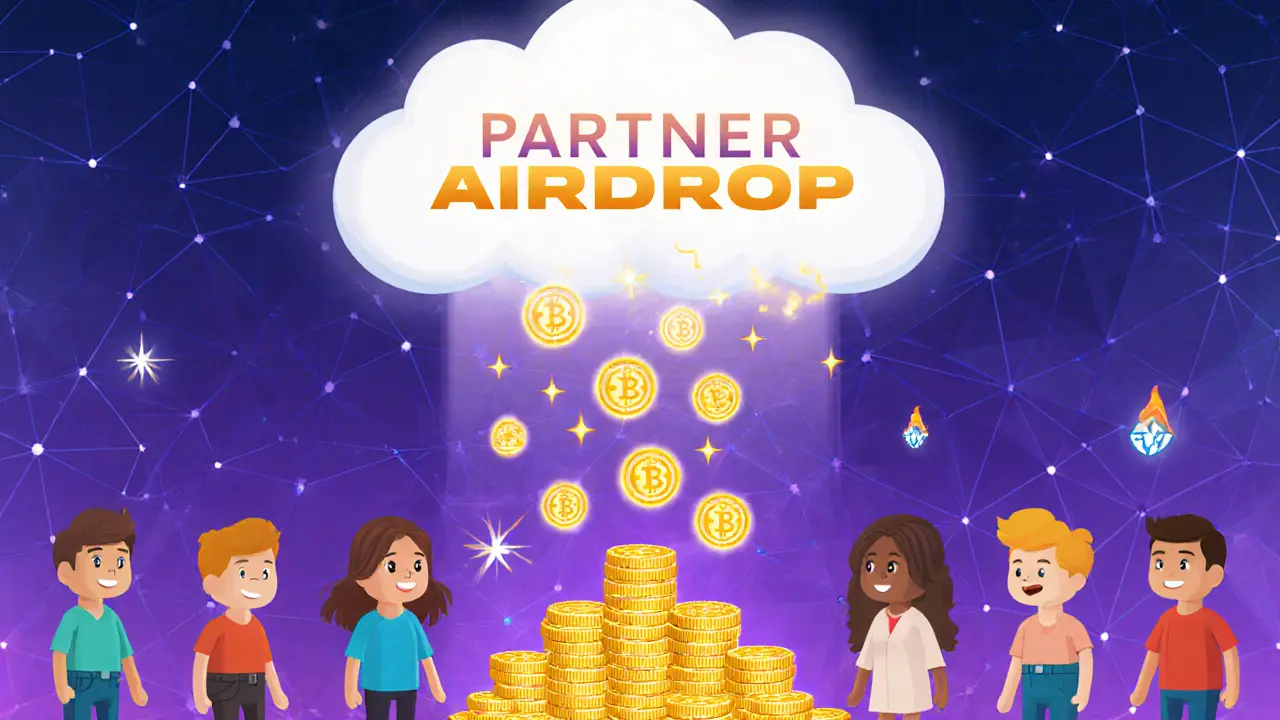Scaleswap (SCA) Airdrop Details: How ScaleSCORE Drives Rewards

ScaleSCORE Calculator
Estimate your potential ScaleSCORE by entering your current holdings and activities below. The calculator updates your score in real-time based on the ScaleSCORE algorithm used by Scaleswap.
Your Estimated ScaleSCORE
0Base Score (Holdings): 0
Staking Multiplier: 1.2x
IDO Boost: +0
Voting Boost: +0
Referral Bonus: +0%
Scaleswap is a fully decentralized IDO launchpad built on Polygon’s Layer2 network. It lets crypto projects raise funds while rewarding the community through a unique, merit‑based airdrop system. The platform’s native utility token, SCA, powers fee payments, governance, and the ScaleSCORE ranking that determines who gets the biggest airdrop slices.
Quick Overview
- Scaleswap runs on Polygon, giving you low‑fee, fast transactions.
- The native SCA token is burned whenever it pays platform fees.
- ScaleSCORE weighs your activity - the higher your score, the larger your airdrop share.
- Airdrops come from partner projects, not from Scaleswap itself.
- Boost your eligibility by holding SCA, staking, voting, and participating in IDOs.
What is Scaleswap?
Designed for crypto projects that need a secure, scalable launchpad, Scaleswap offers a permission‑less environment where developers can create IDOs without gatekeepers. Its DAO‑governed model lets token holders vote on fee structures, new features, and which partner projects get to run airdrops. By operating on Polygon, the platform avoids Ethereum’s congestion and keeps transaction costs under a few cents.
How the SCA Token Powers the Ecosystem
The SCA token serves three core purposes:
- Fee payment: Every IDO launch, token swap, or governance action requires a fee payable in SCA.
- Burn mechanism: Fees are automatically burned, reducing circulating supply and creating a deflationary pressure similar to a voucher that disappears after use.
- Governance stake: Holding SCA grants voting power in the DAO, influencing platform upgrades and partner selections.
Because fees are burned, active participants see their relative share of the token supply grow over time, which can boost both voting weight and airdrop eligibility.
The ScaleSCORE System: Why Activity Beats Pure Holding
ScaleSCORE is a proprietary algorithm that scores users based on:
- Amount of SCA held and staked.
- Frequency of swaps executed on the platform.
- Participation in IDOs (both buying and providing liquidity).
- Voting activity in DAO proposals.
- Referral contributions that bring new users.
The score is recalculated daily, and the latest value determines each user’s share of upcoming airdrops. This model rewards genuine engagement rather than a one‑time snapshot, aligning incentives for long‑term community growth.
Step‑by‑Step: How a Scaleswap Airdrop Works
- Project onboarding: A partner project submits an airdrop proposal to the Scaleswap DAO. Members vote, and once approved, the airdrop terms (total tokens, distribution window, eligibility criteria) are locked on‑chain.
- Score snapshot: At the start of the distribution window, the platform takes a ScaleSCORE snapshot for every SCA holder.
- Weight calculation: Each user’s score is divided by the sum of all scores, producing a weight percentage.
- Token allocation: The partner’s total airdrop pool is multiplied by each weight, delivering proportional token amounts directly to users’ wallets.
- Claim & burn: Tokens are auto‑claimed; any platform fee needed for the claim is paid in SCA and burned, further increasing holders’ relative stake.
Because the distribution is based on live activity, users who trade or vote during the window can improve their share on the fly.

Real‑World Example: WISe.Art NFT Launch
Scaleswap partnered with WISe.Art, the NFT marketplace backed by Nasdaq‑listed WISeKey International Holding Ltd. The project issued its own governance token, TEC DAO Token, and chose Scaleswap to distribute it.
During the distribution, users with higher ScaleSCORE received up to 2.5× the amount of TEC tokens compared to low‑scoring holders. The event showcased how a partner’s token can be fairly allocated without a blunt snapshot, and it fueled a surge in both SCA staking and WISe.Art NFT sales.
Technical Backbone: Why Polygon Matters
Polygon’s Layer2 solution offers:
- Average transaction fees under $0.01.
- Block times of ~2 seconds, enabling near‑instant airdrop claims.
- Interoperability with Ethereum, allowing projects to bridge assets easily.
Scaleswap’s smart contracts are audited annually, and the platform leverages Polygon’s growing DeFi ecosystem to attract more IDO projects.
Security & Risk Checklist
Even with a security‑first team, participants should keep these risks in mind:
- Smart‑contract bugs: While audits reduce risk, vulnerabilities can still surface.
- Market volatility: Token values can swing wildly during IDO launches.
- Regulatory uncertainty: DeFi services operate in a gray legal area in many jurisdictions.
- Rug pulls: Always verify a partner project’s code and team credibility before staking.
Do your own due diligence, use hardware wallets for storage, and never allocate more than you can afford to lose.
How to Maximize Your Airdrop Eligibility
- Buy and hold SCA: The base score starts with the amount you own.
- Stake SCA in the DAO pool: Staked tokens earn a 1.2× multiplier on the base score.
- Participate in weekly IDOs: Each successful purchase adds a fixed boost to your score.
- Vote on proposals: Each vote grants a small but cumulative bump.
- Refer active users: Referrals that complete at least one swap give you an extra 5% boost.
- Stay active during distribution windows: Trading or voting right before the snapshot can push your score higher.
Tracking your score is easy - the Scaleswap dashboard displays a live ScaleSCORE meter next to your wallet address.
Comparison: ScaleSCORE‑Weighted vs. Snapshot Airdrops
| Feature | ScaleSCORE‑Weighted | Traditional Snapshot |
|---|---|---|
| Eligibility Basis | Active participation score | Token balance at single snapshot |
| Reward Fairness | Proportional to engagement | Often favors large, passive holders |
| Incentive Alignment | Encourages platform usage | Little to no platform activity required |
| Risk of Gaming | Mitigated by daily recalculation | High - users can acquire tokens right before snapshot |
| Complexity | Requires dashboard monitoring | Simple, one‑time check |
Next Steps for New Users
If you’re just getting started, follow this short roadmap:
- Set up a Polygon‑compatible wallet (MetaMask, Trust Wallet, etc.).
- Buy a modest amount of SCA on a reputable exchange.
- Connect the wallet to the Scaleswap dashboard and stake SCA.
- Participate in the next IDO - even a small purchase counts.
- Vote on at least one DAO proposal before the next airdrop window.
- Monitor your ScaleSCORE daily; aim for a steady upward trend.
Within a few weeks you’ll be positioned to claim a meaningful share of any partner airdrop that rolls out through the platform.

Frequently Asked Questions
Do I need to hold SCA to receive airdrops?
Yes. Only wallets that hold or stake SCA are assigned a ScaleSCORE, and the score determines airdrop share. Pure observers without SCA won’t appear in the distribution list.
Can I claim airdrops without paying fees?
No. Claiming airdrops requires a small platform fee, payable in SCA, which is burned. This keeps the system sustainable and rewards existing holders.
What happens to the burned SCA tokens?
Burned tokens are sent to an irrecoverable address, permanently removing them from circulation. The shrinking supply can increase the value of remaining tokens over time.
Is the ScaleSCORE system transparent?
Yes. The scoring algorithm is public, and each user can view their daily score breakdown on the dashboard. Changes are only made through DAO proposals, ensuring community oversight.
How often are new airdrops launched on Scaleswap?
There isn’t a fixed schedule. As soon as a partner project passes DAO approval, the airdrop can start. Historically, Scaleswap has seen 3‑5 partner airdrops per quarter.

4 Comments
The ScaleSCORE system looks innocent, but it's a perfect front for a massive token‑burn scheme that concentrates power in a handful of insiders. Every fee you pay disappears, shrinking the supply and inflating the value for those already holding the most. The DAO voting is just a smoke screen to claim decentralisation while the real decision‑makers remain hidden. If you think the airdrop is fair, you’ve been duped by clever marketing. Stay skeptical, read the audit reports, and don’t hand over your keys without a second thought.
Oh great another token‑score gimmick. So you stake, you vote, you get a tiny boost. Still basically a pay‑to‑play ladder.
Honestly i cant beleive how many projekts are rebranded now. The colonisation of DeFi with off‑chain marketing is ad. The so called "ScaleSCORE" is just a ploy to get users to lock capital. One feels as if i was signing up for a loyalty program that never ends.
Imagine a world where every swap you make bumps your airdrop chances – a dystopia of meritocracy wrapped in rainbow‑colored promises. They’ve taken the simple snapshot idea and turned it into a perpetual treadmill, forcing us to hustle for relevance while the protocol developers watch the tokens burn like cheap fireworks. The clever bit is the veneer of fairness: “participate more, earn more,” they chirp, yet the underlying math ensures that the early whales still dominate the pie. It’s a beautiful illusion, a lottery where the odds are rigged from the start, and the only way to stay in the game is to keep feeding the machine. So yes, it’s a brilliant piece of engineered hype, but don’t be fooled into thinking it’s anything other than an elaborate redistribution mechanism that rewards the already‑privileged.